Q
What Is the Road Tax of Honda Civic? How to Calculate It?
The annual road tax of the 1.5L turbocharged model (1,498cc) is RM190. Since its displacement falls within the tax rate range of 1,501cc to 1,600cc (vehicles below 1.6L are taxed at RM190). The 2.0L naturally aspirated model (1,998cc) falls within the range of 1,950cc to 1,999cc, with an annual fee of RM504. Road tax is calculated directly based on the actual engine displacement, not the number of cylinders or the type of forced - induction. Therefore, whether it's a 1.5T turbo engine or a 2.0L NA engine, the charges are based on the Base Rate listed by JPJ. If the vehicle is registered in East Malaysia (Sabah and Sarawak), the cost is about 25% lower than that in West Malaysia. In addition, new vehicles registered after 2022 need to pay an additional 6% SST (replacing GST) and JPJ handling fees (about RM10). Vehicle owners can make online or offline payments through the MyJPJ APP, post offices, or JPJ - authorized agents. They need to bring the vehicle registration card (Geran) and the owner's identification documents.
Special Disclaimer: This content is published by users and does not represent the views or position of PCauto.
Related Q&A
Q
Is there an app to start my 2022 Honda Civic?
Yep, the 2022 Honda Civic does come with remote start capability via the HondaLink mobile app. This app is available for the Malaysian market and works on both iOS and Android devices. Just download it, pair it with your ride, and you're good to go. Beyond remote start, HondaLink also hooks you up with handy features like vehicle status checks, location tracking, and remote lock/unlock.
A couple things to note though: you'll need the car's smart key system for remote start to work, and obviously, your vehicle needs to be in an area with network coverage. Other brands like Toyota and Proton offer similar setups too, think Toyota's MyT app or Proton's Proton Link. But the exact operation and features can vary depending on the model and spec, so it's always a good idea to check your owner's manual or have a chat with your dealer to make sure everything's compatible.
Usually, these apps require a subscription, and some of the fancier features might cost a bit extra. For Malaysian drivers, remote start is a total lifesaver in the sweltering heat – you can fire up the AC beforehand to cool things down, making your drive that much more comfortable.
Q
How to open front trunk Honda Civic 2022?
To open the front trunk (frunk, if equipped) of the 2022 Honda Civic, first make sure the vehicle is turned off. Then, locate the front trunk release lever near the driver's side door or below the center console—usually on the left side of the floor or beneath the dashboard—and pull it firmly to unlock. If your Civic has a smart key, some models might let you pop it open remotely by pressing and holding the trunk button on the fob.
A quick heads-up though: here in Malaysia, the 2022 Civic is mostly sold as a traditional gas-powered model, which typically doesn’t come with a frunk (the engine takes up all that space up front). Frunks are more common on electric or rear-engined cars, so it’s worth double-checking your specific trim first.
If you actually need to get under the hood, pull the hood release lever inside the car (it’s usually down by the left side of the steering wheel), then step out and feel under the hood for the safety latch to flip it open before lifting.
For day-to-day care, keeping an eye on your engine oil and coolant levels is basic stuff to keep your Civic running right. If you’re not super handy with car mechanics, better to flip through the owner’s manual or hit up a Honda authorized service center—no need to risk damaging parts by guessing. And with Malaysia’s hot weather, don’t skimp on checking the coolant and battery regularly either—staying on top of that helps keep you safe on the road.
Q
How to unlock 2022 Honda Civic with dead battery?
If your 2022 Honda Civic won't unlock because the battery's dead, try using the mechanical key to get into the door. There's usually a hidden keyhole on the driver's side door handle – just gently pry off the cover and you can insert the mechanical key to twist and unlock it. Some models might need you to press a small button on the door handle first to reveal the keyhole. Once you're in, if you need to start the car, it's best to use jumper cables for a jump-start or call a professional mechanic to replace the battery.
A quick heads-up: modern cars have a lot of electronic systems, so leaving the battery dead for too long could reset some settings. It's a good idea to check your battery's health regularly. Here in Malaysia, with the hot and humid weather, batteries don't last as long as they do in colder places – typically needing replacement every 2-3 years.
You might want to keep a portable car jump starter in the car for emergencies. They're easy to find at auto parts stores or online marketplaces in Malaysia, and the prices are pretty reasonable. For models with a smart key system, even if the battery dies, there's usually a backup mechanical key inside the fob. Make sure you familiarize yourself with where it is and how to use it beforehand, so you don't panic when you need it.
Q
What kind of battery does a 2022 Honda Civic need?
The 2022 Honda Civic in Malaysia typically comes fitted with a 12-volt lead-acid battery. Specifically, you're looking at either the 55B24L (for the 1.5L turbo models) or the 40B19L (for the 1.8L naturally aspirated variants). These are maintenance-free units, designed to offer long service life and reliable performance, which makes them well-suited for our tropical climate.
When picking a replacement, keep an eye on the Cold Cranking Amps (CCA) rating – aim for at least 360A to ensure it fires up reliably even on scorching hot days. Also, double-check the battery dimensions (length, width, height) to match the original specs; you don't want any fitting issues.
If you're considering an upgrade, AGM (Absorbent Glass Mat) batteries are the more premium option, especially handy for cars with auto start-stop systems. Just make sure your vehicle's electrical system is compatible first.
Malaysian owners should regularly inspect battery terminals for corrosion and get the battery's health checked with proper tools. Generally, you're looking at replacing the battery every 2-3 years, but actual lifespan can vary based on usage habits and how extreme the weather gets. For the best fit and warranty coverage, it's smart to go with genuine batteries from authorized dealers or certified workshops.
Q
What battery does a 2022 Honda Civic key take?
The 2022 Honda Civic's smart key typically uses a CR2032 button battery. These batteries are super easy to find in Malaysia – you can grab them at convenience stores, supermarkets, or auto parts shops, and they won't break the bank. Swapping it out is a breeze too; just gently pry open the key fob case with a coin, and you're good to go.
CR2032s aren't just for Civics, though. They're pretty much the go-to for key fobs across lots of car brands, not to mention computer motherboards and various small electronics. They run at 3V and usually last around 1 to 2 years, depending on how often you use the remote. If you notice your key's range is getting shorter or it's slow to respond, that's a dead giveaway the battery's on its last legs – better replace it sooner rather than later to avoid getting stuck.
Also, with Malaysia's hot and humid weather, it's a good idea to check the battery contacts occasionally for oxidation. A quick wipe with a cotton swab dampened with a little alcohol will keep them clean and ensure a solid connection. If you've got Honda's keyless remote card, the CR2032 still works. But for fancier smart key systems, you might want to head to an authorized service center to get it changed properly.
Q
How to open Honda Civic 2022 gas tank?
To open the fuel tank cap on a 2022 Honda Civic, first make sure the vehicle is unlocked. Then head to the left side of the car where the fuel cap is located (since right-hand drive models in Malaysia typically have it on the left). Just press the outer edge of the fuel door and it'll pop open—no need to fumble with an interior release button. It's one of those handy little design touches Honda's been rolling out lately to make life easier.
Quick tip: Some Honda models will flash a "fuel cap open" warning on the dashboard, so after filling up, give the cap a good twist to make sure it's tight. Saves you from that annoying warning light coming on later. For Malaysian drivers, it's also worth double-checking that the local fuel nozzle sizes (like for Petronas Primax 95/97 or Shell V-Power) fit properly—most modern cars are standardized, but if you struggle to insert the nozzle, it might just be a simple user error.
Oh, and don't forget to wipe down the area around the fuel cap every now and then to keep dust from gumming up the seal. If the cap feels loose or you notice it's not sealing right, swing by a Honda authorized service center sooner rather than later. You don't want rainwater seeping in during the monsoon or risking issues with the evaporation emission system.
Q
How do I connect my phone to a 2022 Honda?
To connect your phone to a 2022 Honda, first make sure your ride is equipped with Honda Connect or Apple CarPlay/Android Auto – most 2022 models come with these features. For Apple CarPlay or Android Auto, just plug your phone into the USB port (usually under the center console) using a USB cable, then follow the prompts on the in-car screen to finish setup. If you're going Bluetooth, head to the Bluetooth settings in the car's system, turn on your phone's Bluetooth and search for devices. Select your Honda model, enter the pairing code (typically 0000 or 1234), and you're connected. Some models even support wireless CarPlay or Android Auto, but double-check your phone and car system are compatible first.
Also, it's a good idea to keep both your phone and car's software updated for the best compatibility and feature performance. If your Honda has Honda Connect, download the official app to unlock extra features like remote control and vehicle status checks. Here in Malaysia, with the hot weather, leaving your phone connected for too long can cause overheating. When you park, consider disconnecting it to protect your device. And always use original or high-quality USB cables to avoid connection issues – cheap ones can be more trouble than they're worth.
Q
How to turn on idle stop on Honda Civic 2022?
Activating the idle stop function on the 2022 Honda Civic is super straightforward. First, make sure the car's started and up to operating temperature. Then, look for the button labeled "Idle Stop" – it's usually down by the center console or maybe on the left side of the steering wheel. Give it a press, and when the indicator light comes on, you're good to go. The system automatically shuts off the engine when you come to a stop to save fuel, and fires right back up as soon as you lift your foot off the brake.
A quick heads-up though: there are times it won't kick in – like if the battery's low, the AC hasn't hit your set temp yet, or you're on a steep hill. That's all normal, just the system making sure safety and comfort stay top priority. For our friends in Malaysia, running the AC constantly in that tropical heat might mean the idle stop activates a bit less often, but that's totally expected, not a glitch.
Other cars in the same class, like the Toyota Corolla and Mazda3, have similar tech, but each brand's system feels a little different. Honda's is known for being really smooth when it restarts. If you're not planning to use the feature for a while, it's a good idea to take short drives every now and then to keep the battery charged – remember, this system relies on the 12V auxiliary battery to do its thing.
Q
How to start Honda Civic 2022 without key fob?
If your 2022 Honda Civic smart key dies or stops working, you can try the following method: hold the key close to the start button (usually on the right side of the steering wheel) and press and hold the start button. The car's sensor system will use short - range RFID to temporarily start the engine—it's a handy emergency feature of Honda's Keyless Access system.
Note that, Malaysian drivers: you'll need to keep your foot on the brake pedal while doing this, and you might see a "Key Not Detected" message pop up on the dashboard. If this happens, it's best to replace the key battery (it takes a CR2032) as soon as you can. If the engine still won't start, the key's chip might be malfunctioning—your best bet is to contact an authorized Honda dealer in Malaysia to have it re - paired or reset.
It is advisable to store your spare key somewhere that is protected from magnetic interference. Cities like Penang or Kuala Lumpur have a large number of telecom towers, which can sometimes interfere with the key's signal. Also, be cautious of aftermarket windscreen tints with metal content—they can weaken the sensor's sensitivity. And since there is a lot of rain here, keep that smart key dry during the monsoon season to avoid water damage making the circuits short - circuit and causing the sensing function to fail.
Q
Can I start my 2022 Honda with my phone?
For some Honda models in Malaysia, remote engine start via smartphone was indeed a thing back in 2022. But here's the catch: it all depends on whether the specific model comes equipped with the HondaLink smart connectivity system. Your higher-trim rides like the City RS or Civic e:HEV, for example, typically had this feature. To get it going, owners first needed to download the HondaLink app, pair it with their vehicle, and then they could fire up the engine or pre-cool the cabin remotely using either Bluetooth or mobile data. Just keep in mind, though, that the effective range and network stability could definitely impact how well this works in the real world.
It's worth pointing out that this kind of smart connectivity tech is fast becoming a mainstream feature in the Malaysian market. A bunch of other brands, like Toyota and Hyundai, have rolled out similar setups too. The execution might vary a bit between them, though. Some models might require a smart key fob to be nearby, or there could even be a specific subscription service involved. So, if you're looking to use this, your best bet is to dig into your vehicle's owner's manual or have a chat with your dealer to check compatibility. And of course, whenever you're using these remote features, make sure your car is parked in a safe spot to avoid any potential hiccups.
Latest Q&A
Q
Which country is Jaguar E- Pace made in?
The Jaguar E-PACE is a luxury compact SUV built in several locations worldwide, with its primary production hub at Magna Steyr's plant in Graz, Austria – a facility renowned for crafting high-quality vehicles under contract, including models for other major brands. For the Malaysian market, the E-PACE arrives via import, guaranteeing it meets Jaguar's stringent global standards. As Jaguar's first foray into the compact SUV segment, the E-PACE showcases the brand's signature design language paired with advanced powertrain tech, such as the Ingenium range of turbocharged engines. These units strike a fine balance between performance and fuel efficiency, making them well-suited for both Malaysian city commutes and longer road trips. Malaysian buyers can purchase with confidence, too; every imported E-PACE undergoes rigorous quality checks and is backed by Jaguar's comprehensive after-sales network, which includes regular servicing and expert technical support to keep your vehicle running in top condition.
Q
What is the difference between Jaguar E-Pace and F-pace?
The Jaguar E-PACE and F-PACE are two SUVs with distinct personalities, each tailored to different needs. The key differences lie in their size, power, and intended use.
The E-PACE is Jaguar's compact SUV offering. Its smaller footprint makes it a nimble companion for city driving, where squeezing into tight parking spots and zipping through traffic is a breeze. Under the hood, you'll find a 2.0-liter turbocharged engine, which delivers peppy performance paired with decent fuel efficiency – perfect for young families or those who commute daily and value agility.
Step up to the F-PACE, and you're in the realm of a mid-size SUV. This means more interior space, particularly noticeable in the rear seats and a more generous cargo area, making it ideal for folks who regularly haul passengers or need extra room for luggage and gear. The F-PACE also ups the ante on power, with options like the punchy 3.0-liter six-cylinder engine, catering to those who enjoy longer road trips or crave a more spirited driving experience.
Both SUVs boast Jaguar's signature luxurious design language and interiors that feel premium to the touch. However, the F-PACE edges ahead when it comes to cutting-edge tech and overall opulence. Think optional upgraded sound systems and a more comprehensive suite of driver assistance features for that extra layer of sophistication and convenience.
Here in Malaysia, the E-PACE really comes into its own on our narrower city streets, where its maneuverability is a big plus. The F-PACE, on the other hand, shines as a family hauler or for drivers who love weekend getaways and exploring beyond city limits.
On top of that, Jaguar's local after-sales network is quite solid, so both models benefit from the brand's professional maintenance services. Ultimately, the choice between them boils down to your individual lifestyle and what you prioritize most in a vehicle.
Q
How to replace the rear wiper blade on the Jaguar E-Pace?
Changing the rear wiper blade on your Jaguar E-Pace is actually a piece of cake. First off, you'll need to pick up a wiper blade specifically designed for this model. You can find OEM or compatible options at Jaguar authorized dealers in Malaysia or big auto parts stores – I’d recommend going for one with a rubber protective coating to make it last longer. When you’re ready to do the swap, gently lift the wiper arm up to a vertical position. Be careful not to let it snap back suddenly, as that could damage the glass. Next, locate the release tab on the wiper blade connector (it’s usually in the middle), press it down, and slide the old blade out towards the end of the wiper arm. Then, line up the new blade with the slot and push it in the opposite direction until you hear a "click" – that means it’s locked in place. Finally, just gently lower the wiper arm back down.
One thing to note: Malaysia’s rainy season is pretty long, so it’s a good idea to replace your wiper blades every 6-12 months. If you start noticing streaks, skipping, or weird noises when they’re wiping, swap them out right away. Also, when parking, try to lift the wiper arms up to keep the rubber from warping in the heat. Oh, and heads up – the wiper blade specs might be different between the 2017-2020 models and the facelifted versions from 2021 onwards. If you’re not sure which one you need, just give your VIN to the parts supplier and they can check for you.
Q
How much is the new Jaguar E-Pace?
The all-new Jaguar E-Pace hits Malaysian shores with a price tag that varies depending on the trim you pick. The entry-level model starts at around RM 398,000, while the fully-loaded versions can nudge closer to RM 450,000. For the most up-to-date figures and any ongoing promotions, your best bet is to swing by your local authorized Jaguar dealer – they’ll have the latest scoop.
As a luxury compact SUV, the E-Pace turns heads with its sporty looks, a seriously sharp interior, and all the tech you’d expect. Under the hood, you’ll find Jaguar’s Ingenium turbocharged engine, which dishes out more than enough grunt for spirited drives. Pair that with the Jaguar Drive Control system, and you’ve got a ride that adapts to just about any road condition you throw at it – handy for Malaysia’s mix of highways and backroads. Speaking of local roads, the E-Pace also boasts a decent ground clearance, making those occasional rough patches a breeze. Safety hasn’t been skimped on either, with features like adaptive cruise control and emergency brake assist coming standard.
To top it off, Jaguar Malaysia is offering a range of financing options and warranty packages, making it that much easier to get behind the wheel of this British luxury SUV.
Q
How to improve the fuel efficiency on Toyota Tundra?
If you want to boost your Toyota Tundra's fuel economy, here are a few angles to tackle it. First off, keep the truck in tip-top shape. Regularly swap out the air filter, spark plugs, and engine oil to make sure the motor's running at peak efficiency. And don't sleep on tire pressure – underinflated tires create more rolling resistance, which guzzles extra fuel. I'd suggest checking those pressures at least once a month and inflating 'em to the specs the factory recommends.
Next up, tweak your driving habits. Lay off the jackrabbit starts and sudden stops; keeping a steady speed is your best friend here. On the highway, cruise control is a lifesaver – it cuts down on unnecessary throttle jabs. Then there's the AC conundrum. Yeah, rolling the windows down feels nice, but at highway speeds, that wind resistance can actually make you burn more fuel than just cranking the AC.
For our friends in Malaysia, with that relentless heat making AC a must, make sure you're cleaning the AC system regularly to keep it cooling efficiently. Also, lighten the load – ditch the roof racks and any extra gear you don't need. Less weight and drag mean better MPG.
Fuel choice matters too. The Tundra can handle regular gas, but sticking to the octane rating Toyota recommends will let the engine perform its best, which in turn helps with efficiency.
Lastly, consider switching to a lower viscosity motor oil, like 0W-20 or 5W-20. Thinner oil reduces internal engine friction, which is a win for fuel economy. These little tricks aren't just about saving at the pump – they'll help your Tundra last longer too. Definitely handy for Malaysian drivers who do a lot of highway miles or haul cargo regularly.
View MoreRelated News
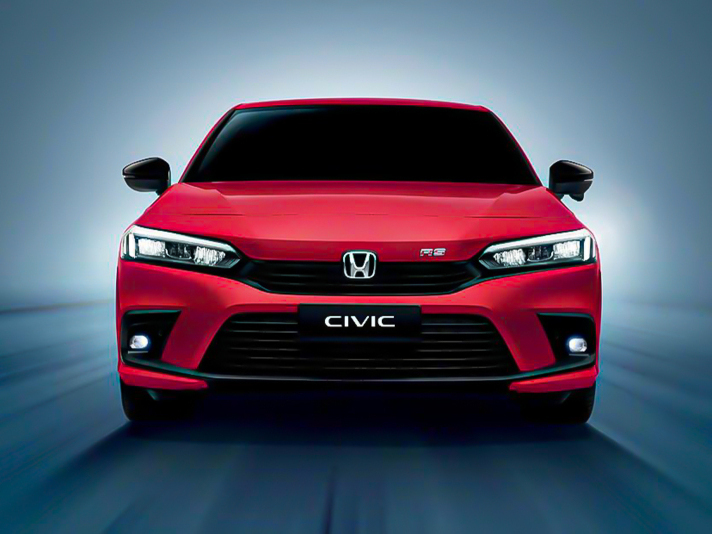
Honda Civic Interior Revealed: A Comprehensive Analysis of Civic’s Interior Charm
Kevin WongJul 10, 2025
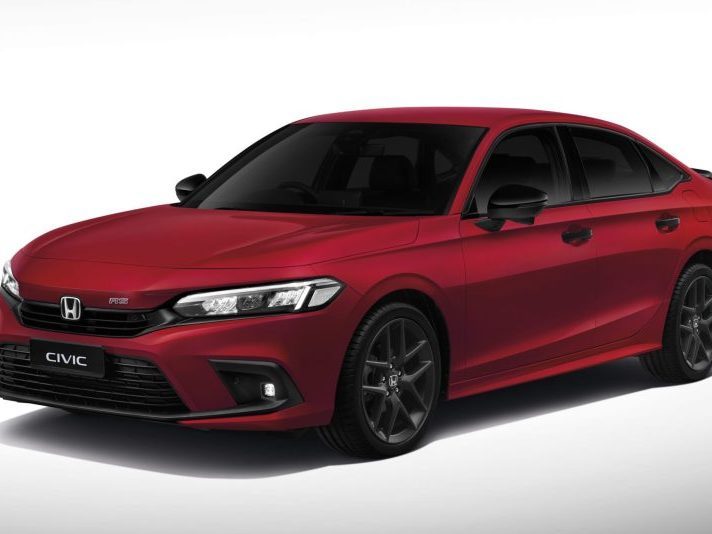
Honda Civic Price Revealed: The Most Detailed Buying Guide!
AshleyApr 8, 2025
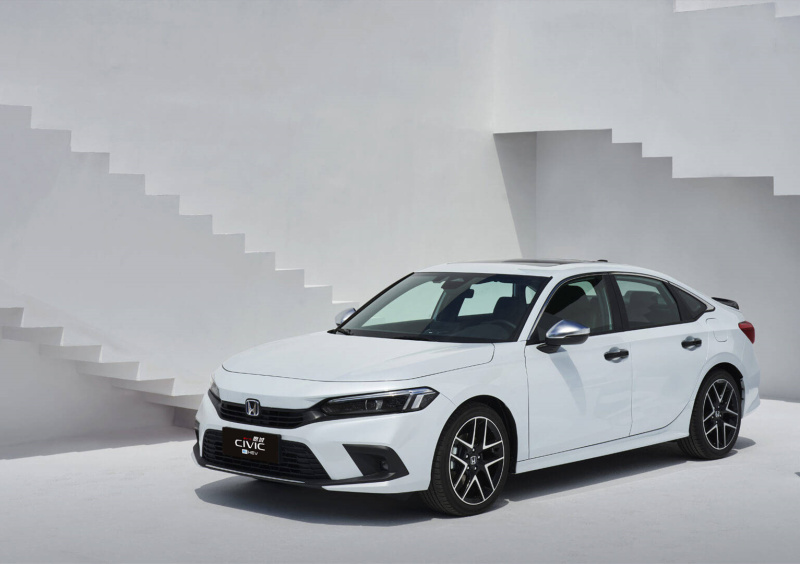
Whether it's about appearance or handling, why do young people all like Honda Civic?
WilliamSep 24, 2024
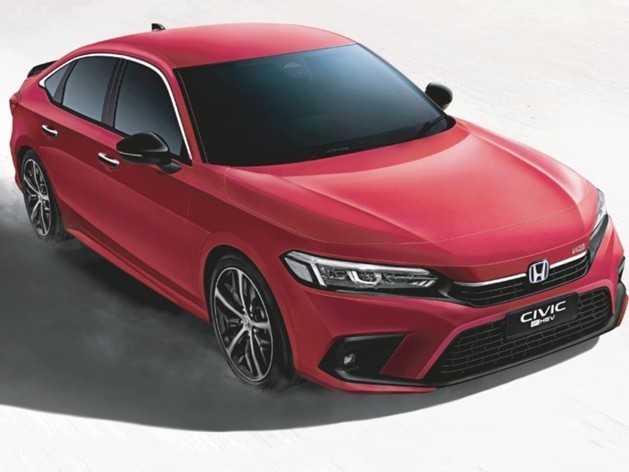
2022 Honda Civic: Hybrid car with the fastest acceleration, lowest fuel consumption, who says eco-friendly cannot be fast
JohnSep 3, 2024
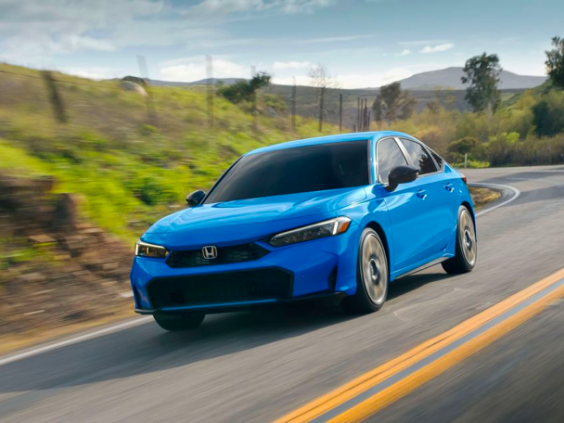
2025 Honda Civic debuts, minor changes in appearance, has 1.5 Turbo model been discontinued?
LienMay 22, 2024
View More







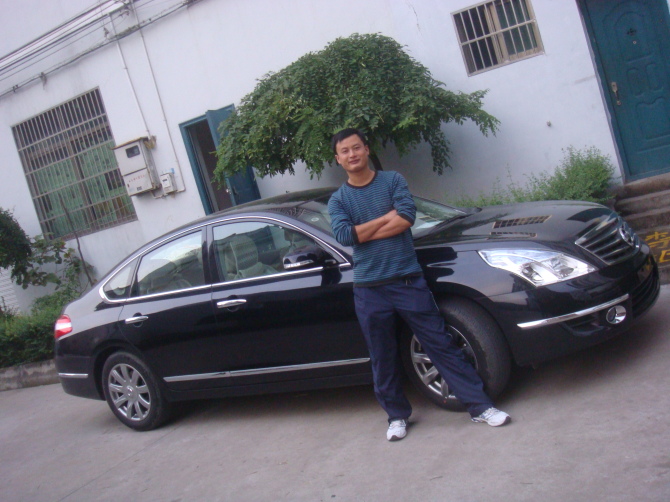




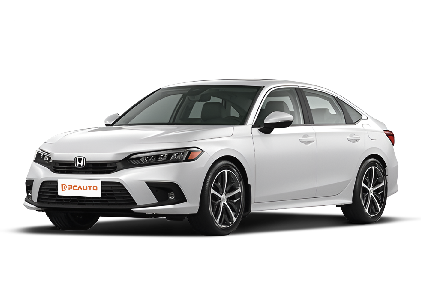
 Cars
Cars
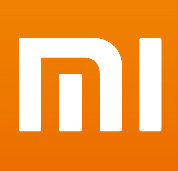



Pros
Cons